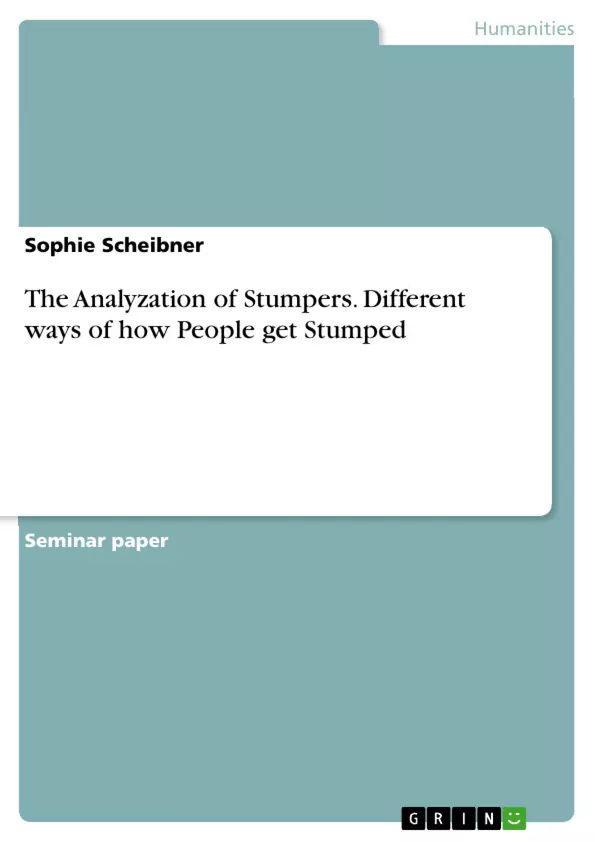Within the scope of this paper, it shall be answered how people get stumped in different ways. The goal of this paper is to investigate and to find out how stumpers affect people differently and to understand why some people have difficulties to solve specific stumpers, while others do not. Although decisions depend on a large number of different factors, which make them very complex, this paper also aims to give an impression about how decision-making affects people’s ability to approach and solve stumpers.
As problem solving takes place in many different areas of human life, different human cognitive activities are activated in order to approach specific problems. In the case of stumpers, the problems that are to be solved, address different ways of information acquisition and processing. While some people are able to implement the given information correctly and form the right result, some struggle to form a result that actually solves the problem or to form a result at all.
At first, the case of stumpers is approached in this paper by stating the definition of terms. In the further course, a distinction between the various types of stumpers is made, followed by an explanation of how stumpers work and how they manage to lead people astray. To do so, four different stumpers of two various types will be analyzed regarding the way they work and the foun- dation they are built on. Each stumper will predominantly be analyzed based on the most outstanding reason why some people fail to solve these specific stumpers. To test and prove the proposed reasons, the results of a questionnaire will also be analyzed and used. The results of the investigation will then be summarized in a conclusion.
Inhaltsverzeichnis (Table of Contents)
- Introduction
- Stumpers
- Definition of Terms
- Different Kinds of Stumpers
- How Stumpers Work
- The Analyzation of Stumpers
- Linguistic Stumpers
- Regular Stumpers
- Stumper 1: Setting Different Focuses
- Stumper 2: The Quantity of Dominant Alternatives
- Stumper 3: Overinterpretation
- Stumper 4: The Denial of Being Stumped
- Linguistic Stumpers
- Conclusion
Zielsetzung und Themenschwerpunkte (Objectives and Key Themes)
This paper aims to analyze different ways people get stumped when presented with seemingly simple problems. It explores how stumpers, a subcategory of riddles, affect people differently, investigating why some struggle to solve them while others do not. The paper examines the role of decision-making processes in tackling these challenges, focusing on how information acquisition and processing influence people's ability to solve stumpers.
- The definition and classification of stumpers
- The mechanisms by which stumpers lead people astray
- The analysis of different types of stumpers and their impact on problem-solving
- The role of decision-making processes in overcoming stumper challenges
- The impact of information acquisition and processing on stumper solutions
Zusammenfassung der Kapitel (Chapter Summaries)
The paper begins by introducing the concept of stumpers and defining key terms. It explores the different types of stumpers, including regular and linguistic stumpers, and examines how they function. Chapter 3 delves into the analysis of specific stumpers, focusing on the reasons why some individuals struggle to solve them. The analysis highlights the role of factors like information processing, cognitive biases, and decision-making in determining success or failure in solving stumpers.
Schlüsselwörter (Keywords)
This paper focuses on the concept of stumpers, exploring their definition, different types, and impact on problem-solving. It emphasizes the role of decision-making, information acquisition, and processing in tackling these challenging situations. Key concepts include regular and linguistic stumpers, cognitive biases, information processing, and decision-making processes.
- Arbeit zitieren
- Sophie Scheibner (Autor:in), 2020, The Analyzation of Stumpers. Different ways of how People get Stumped, München, GRIN Verlag, https://www.hausarbeiten.de/document/1348231


